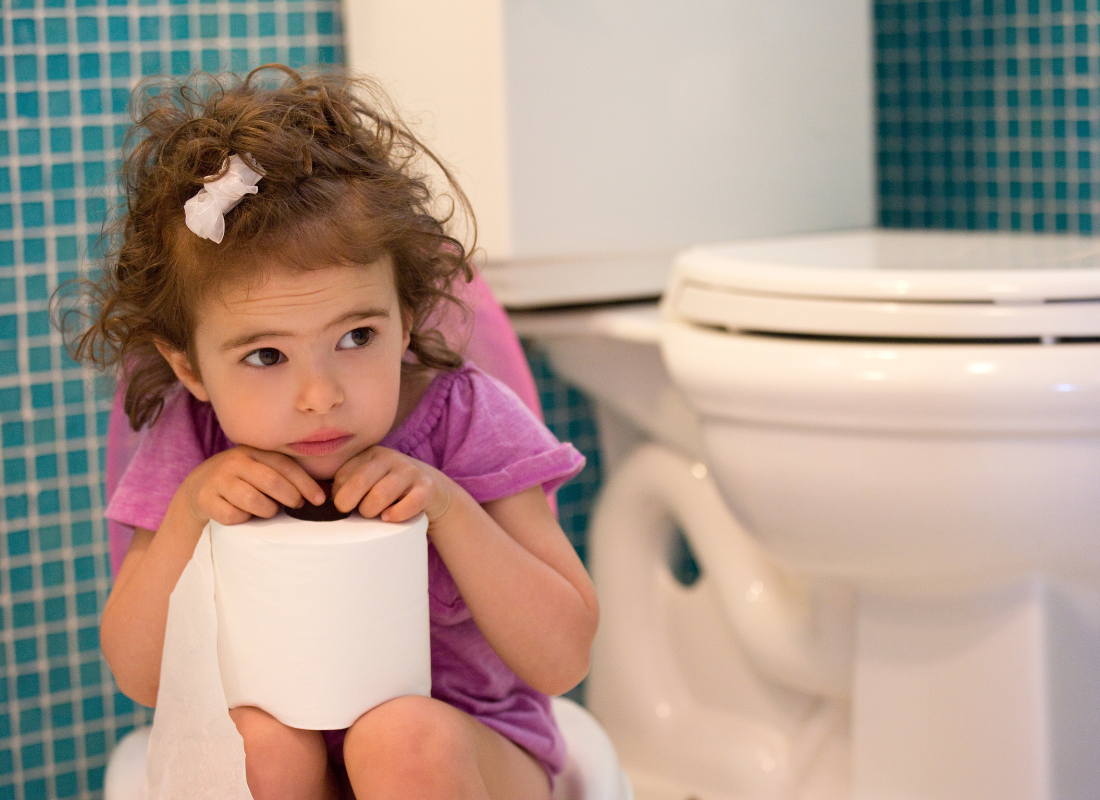Why poo problems might be slowing things down
You have stocked up on wipes. Bought the potty. Maybe even printed out a sticker chart. You are in. But potty training is not going the way you hoped. One day they are interested, the next they are hiding behind the curtain saying no thank you to the potty and pretending not to hear you.
You might be wondering — are they just not ready? Are you doing something wrong? Maybe. But there is one sneaky thing that could be getting in the way, and many parents do not even realise it at first.
Constipation.
That’s right. Not glamorous. Not fun. But surprisingly common — and often the reason potty training hits the brakes.
So what’s the link?
When a child is constipated, doing a poo can be uncomfortable or even painful. And toddlers are clever. If it hurts once, they remember. And they will do their very best to avoid doing it again.
This is where the holding starts. They may look like they are just being stubborn or distracted, but really, they are trying not to poo. You might notice them clenching, dancing on the spot, or suddenly becoming very interested in dinosaurs. But behind the scenes, things are building up. Literally.
The longer they hold, the drier and larger the poo becomes. That means the next time they do go, it is even more uncomfortable. And then the fear becomes stronger. Cue the cycle: hold, pain, fear, more holding.
Before you know it, you are not just managing potty training. You are managing a child who is now afraid of going to the toilet altogether. And that can be really disheartening, especially if they were showing signs of readiness before.

Things that can help with constipation
The good news? There are plenty of small steps you can take that can make a big difference. Here are a few to try:
Keep things flowing
Offer water regularly throughout the day. A fun cup or a silly straw can work wonders if your toddler is not a natural sipper.
Get fibre on the plate
Fibre helps keep things moving. Try soft fruits like pears, apples (with the skin on), kiwi or berries. Whole grains, porridge, and veggie sticks are also great additions. You do not need to overhaul every meal — even a few swaps can help.
Movement matters
Let your child stay active. Dancing, playing, climbing, or just running around in the garden supports healthy digestion and helps get things going.
Make toilet time chill
Avoid making the potty feel like a big deal. Let them sit for a few minutes without pressure or expectations. If they go, great. If not, no stress. A relaxed routine works better than a rushed or forced one.
Know when to ask for help
If things are not improving, or you are worried that holding has become a regular habit, talk to your GP or health visitor. A little bit of advice early on can prevent bigger problems down the line.

Constipation is one of the most common reasons potty training goes off track. It is easy to miss and even easier to mistake for stubbornness or regression. But behind that sudden potty refusal might be a tummy that just needs a little help.
But here is the good news. You can break that cycle. With patience, a few practical changes, and a no-pressure approach, your child can feel safe and confident again. Sometimes all it takes is a little time, a lot of fruit, and a reminder that progress is not always a straight line.
You have got this. One poo at a time.

